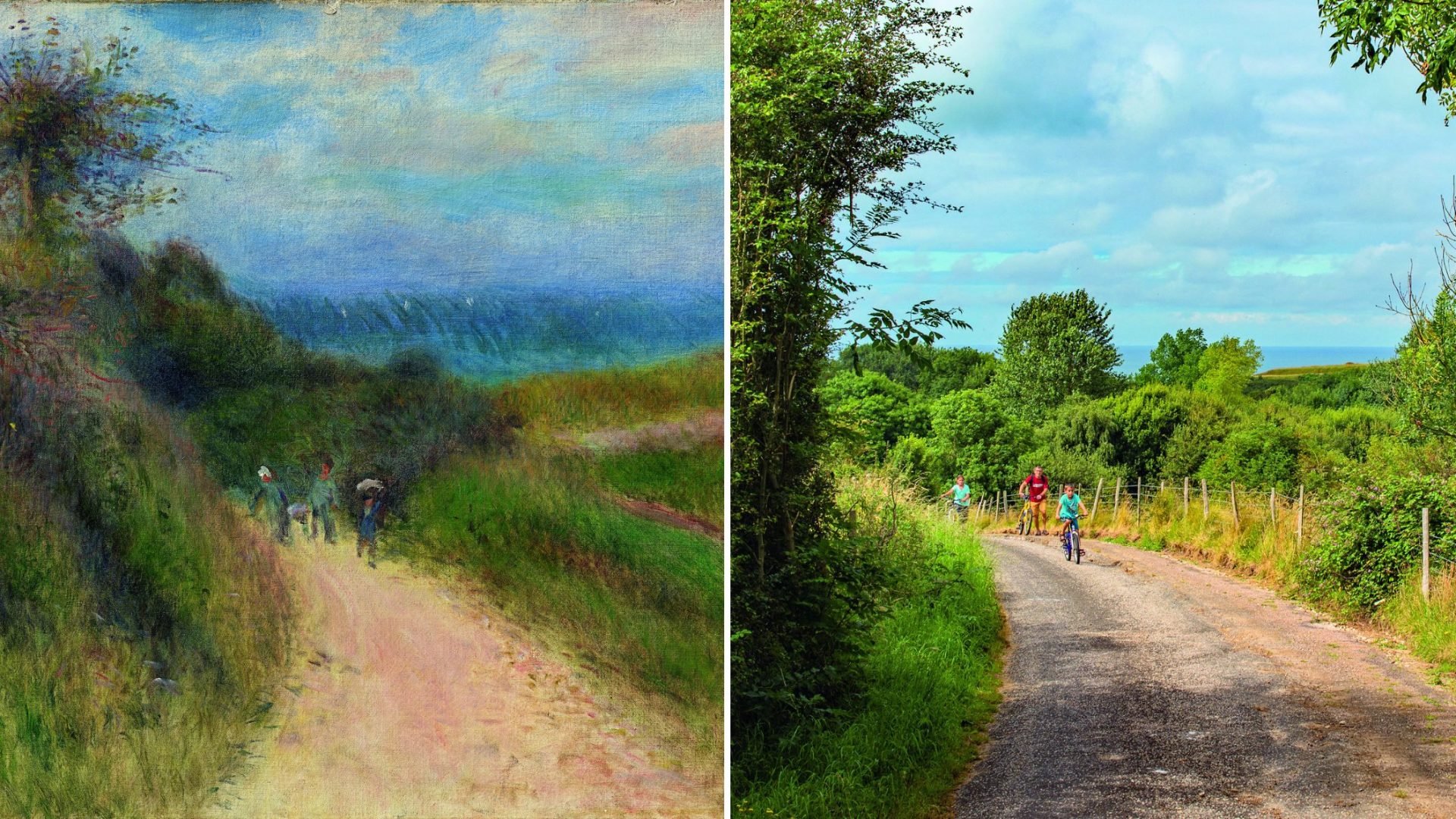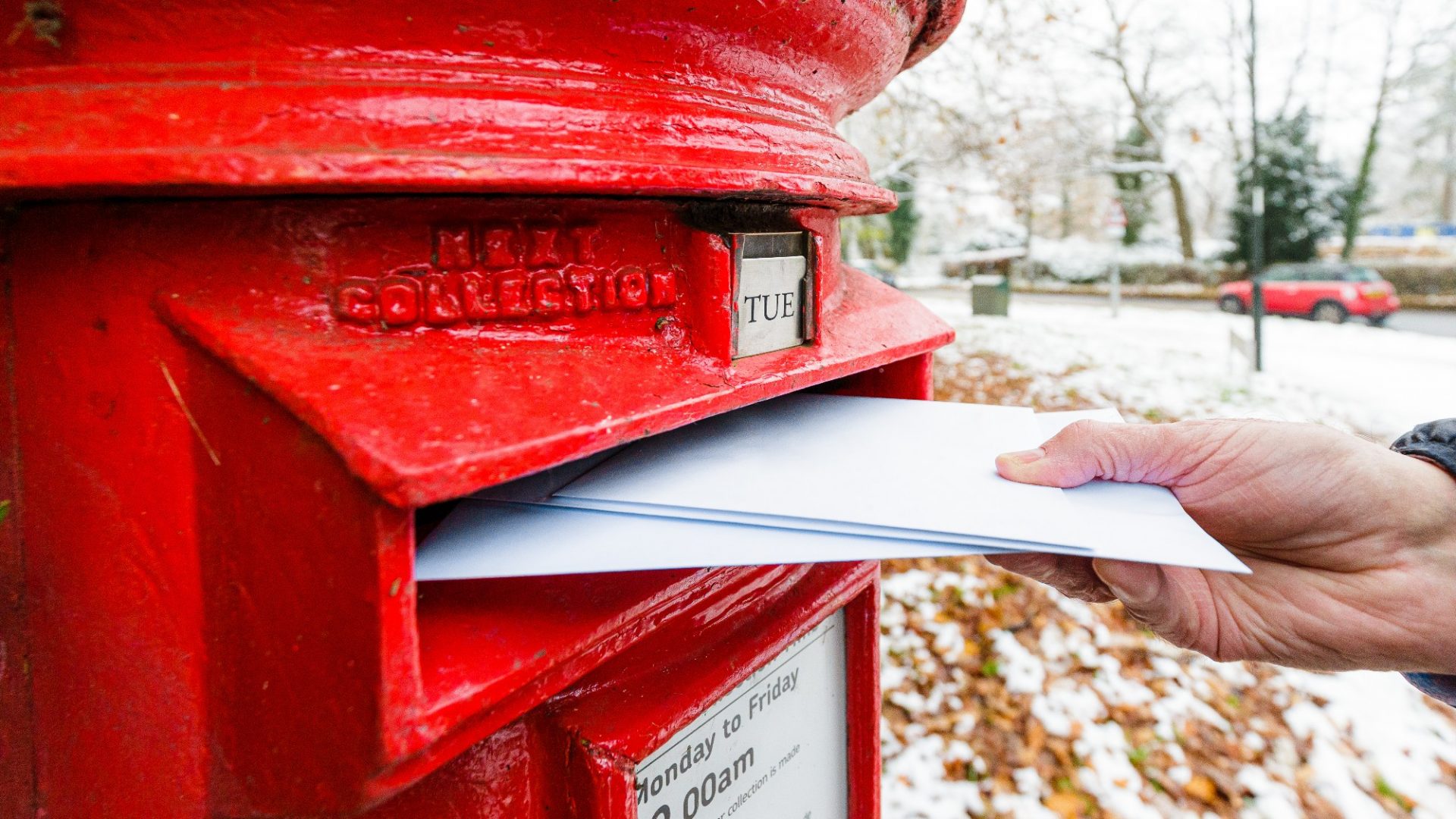One fine Sunday morning in 1872, Claude Monet set himself down on the banks of the Seine and painted the sun setting on the river, its dwindling rays still strong enough to catch a boat’s sail with a dash of pink.
He had moved to Argenteuil, a small town just outside Paris, in 1871 and painted its surroundings many times. On this occasion, he depicted the grassy, muddy bank to the right of the river, overhung by trees. In the distance, a grand chateau alongside factory chimneys. On the left, the trees seem to come down to the water’s edge.
Stand where Monet painted Argenteuil, Late Afternoon today. There are still trees on the left, though they seem more ordered and are overlooked by high-rise developments. A characterless block has replaced the chateau, and instead of the straggly riverside to the right, a four-lane highway.
Maybe that’s what one would expect. Those Normandy beaches, country lanes and flower-filled gardens, palazzi in Venice and villas in Italy that were made so familiar by Impressionists such as Monet have all disappeared, “improved” by 150 years or so of progress.
Not necessarily so. In an intriguing experiment, German photographer Christoph Irrgang was commissioned by the Barberini Museum in Potsdam, which owns more than 100 Impressionist paintings, to discover just how much those places had changed.
Clutching a list of 80 paintings by the likes of Pierre-Auguste Renoir, Alfred Sisley and Paul Signac, he found, surprisingly, that many of them have remained unchanged or are still recognisable.
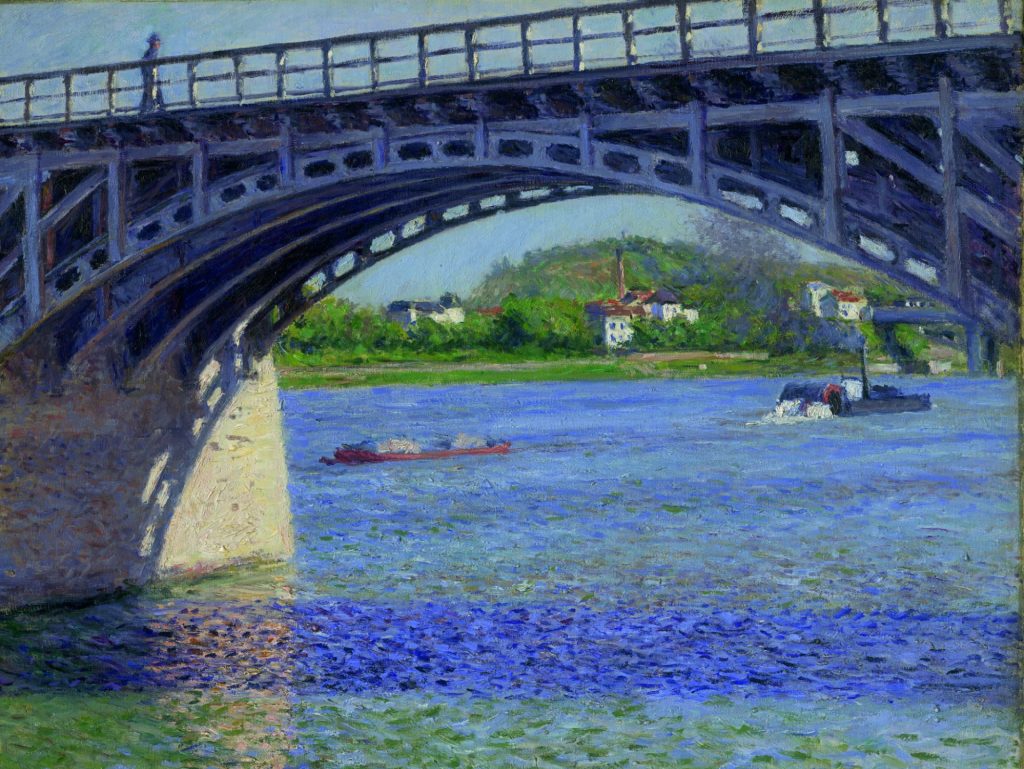
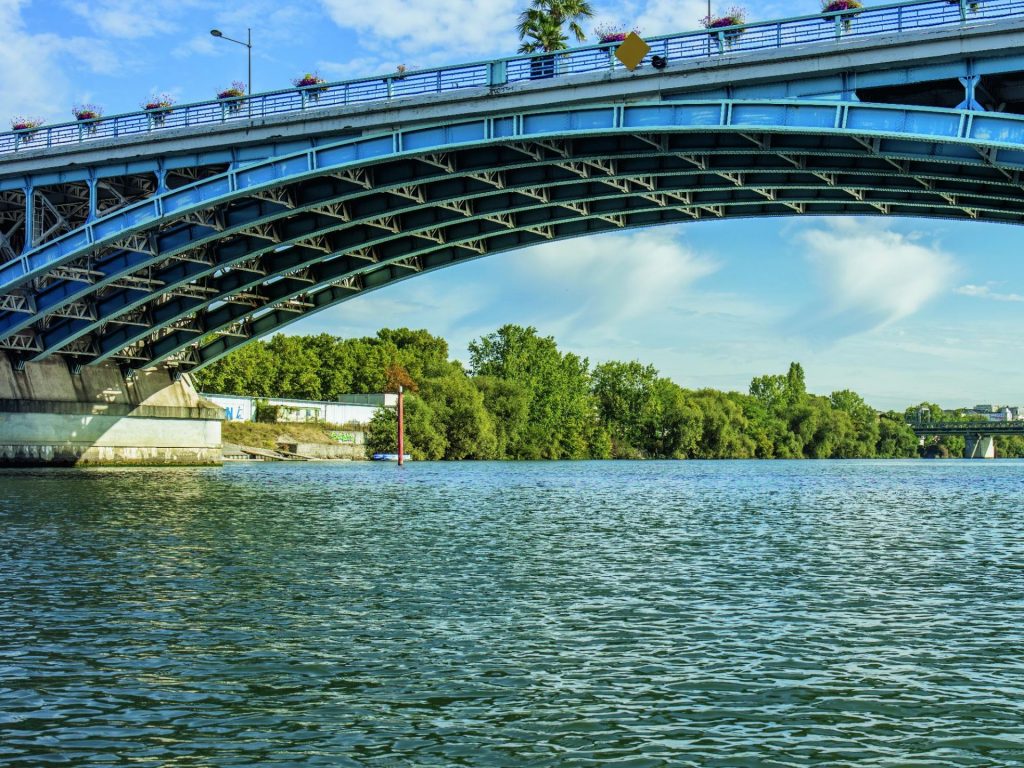
The images have been published in Impressionist Places: Revealed in Paintings and Photographs by Miriam Leimer to coincide with the 150th anniversary of the first Impressionist exhibition in 1874 – an event slated by some critics as “paint scrapings from a palette spread evenly over a dirty canvas”.
On his first recce in 2016, Irrgang drove more than 2,000 miles in five days to Brittany and back to his home in Hamburg. He researched exhibition catalogues, archives, old maps and even used satnav to locate where the artists might have set up their easels to paint their masterpieces.
He soon learned tricks to make the task easier, taking with him a folding bike, an inflatable kayak – because he found that many paintings had been made from the water – and a small stepladder to mirror the perspective that his subjects had attained. He balanced on a vaporetto in Venice to have the same view Monet had enjoyed from a gondola, and positioned himself on a houseboat for a waterside photograph in Holland.
Perhaps it’s not surprising that seaside scenes such as Monet’s Rocks at Belle-Île, an island off France’s Atlantic coast, or The Cliff and the Porte d’Aval are unchanged and Irrgang’s photographs are accurate replications, altogether more “factual” than the paintings, but are confirmation that, as one might expect, the subtleties of light, shade and colour that Monet brings to the sea and sky cannot be reproduced.
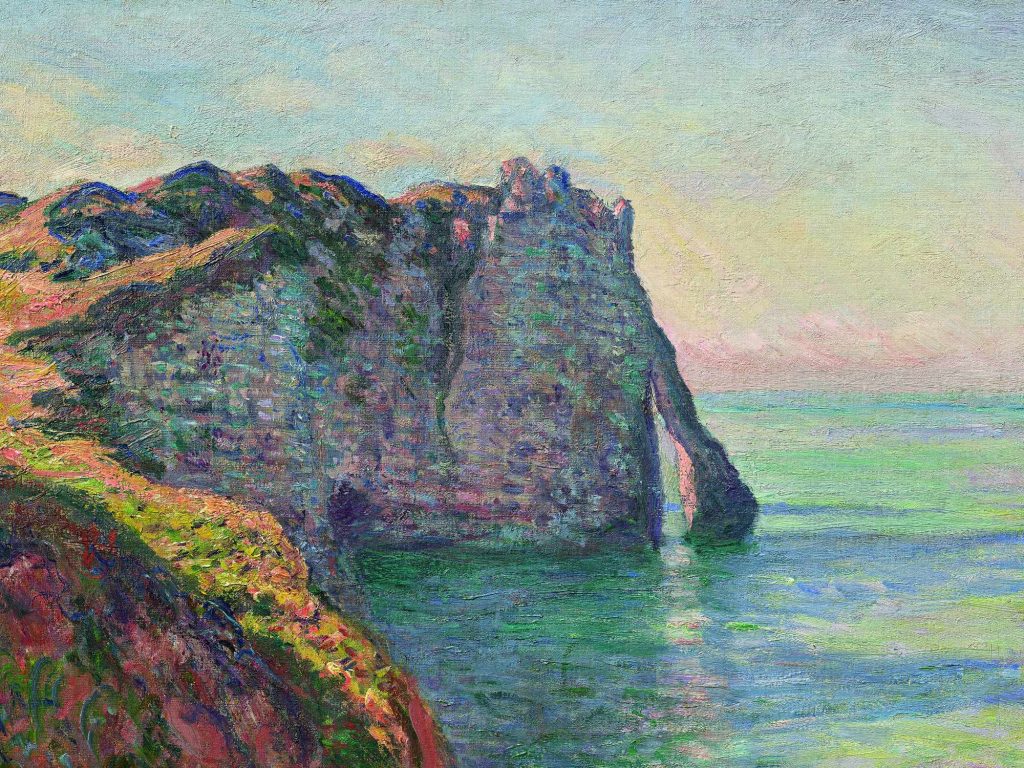
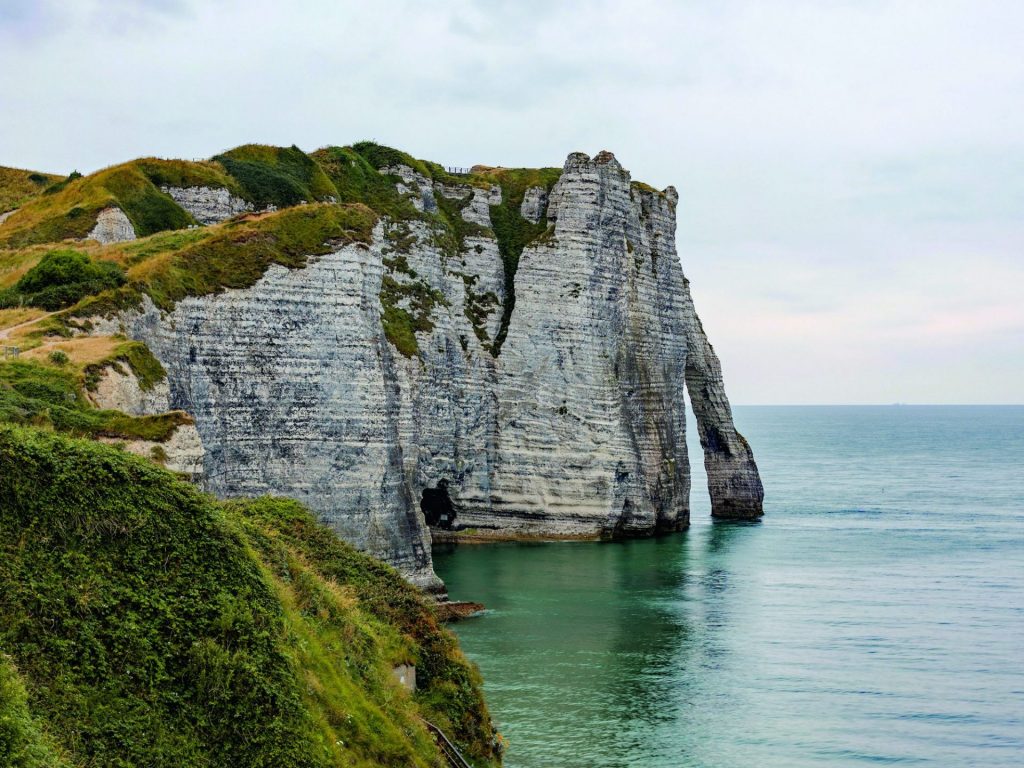
More difficult to recreate were paintings such as Eugène Boudin’s Le Havre: Sunset on the Sea. Not for nothing was he dubbed “king of the skies” as this view testifies – an almost deserted beach, a low tide, just a few walkers caught in the setting sun and an endless sky. Irrgang reckons Boudin set up his easel on the harbour entrance, and he followed suit to capture an image that recalls the original. Boudin would recognise it.
The ladder came in handy for Renoir’s Road to Berneval. Irrgang had to get some height so he could capture not just the mussel harvesters walking along a sandy track, but also the sea in the distance, as Renoir had. He managed just the merest sliver of blue beyond the trees, but his composition became happily akin to the original when three cyclists came into view at the very spot where the harvesters had walked.
Monet’s The Fort of Antibes is used as the book’s cover image with a juxtaposition of old and new, and it emphasises how little has changed. Close up, at least. Pull back, and the photograph shows how Monet’s mountainous background is now built up with the resorts of the French Riviera, and how an empty, choppy sea now has swimmers bobbing around and the rocks are covered in deckchairs.
But for all the ladders and satnav references, all the preparation, one challenge Irrgang found hard to deal with was the weather.
He recalls how he visited places many times to match place, season and time with the weather conditions of 150 years ago: “I came to understand more and more why Monet complained about the weather so much in his letters. It is mainly a question of time and patience, and naturally a certain amount of luck. The weather or the lighting can often change in a matter of minutes, and even under a gloomy sky it is worth waiting for the moment when more light shines through the clouds – sometimes right at the place depicted in the painting.”
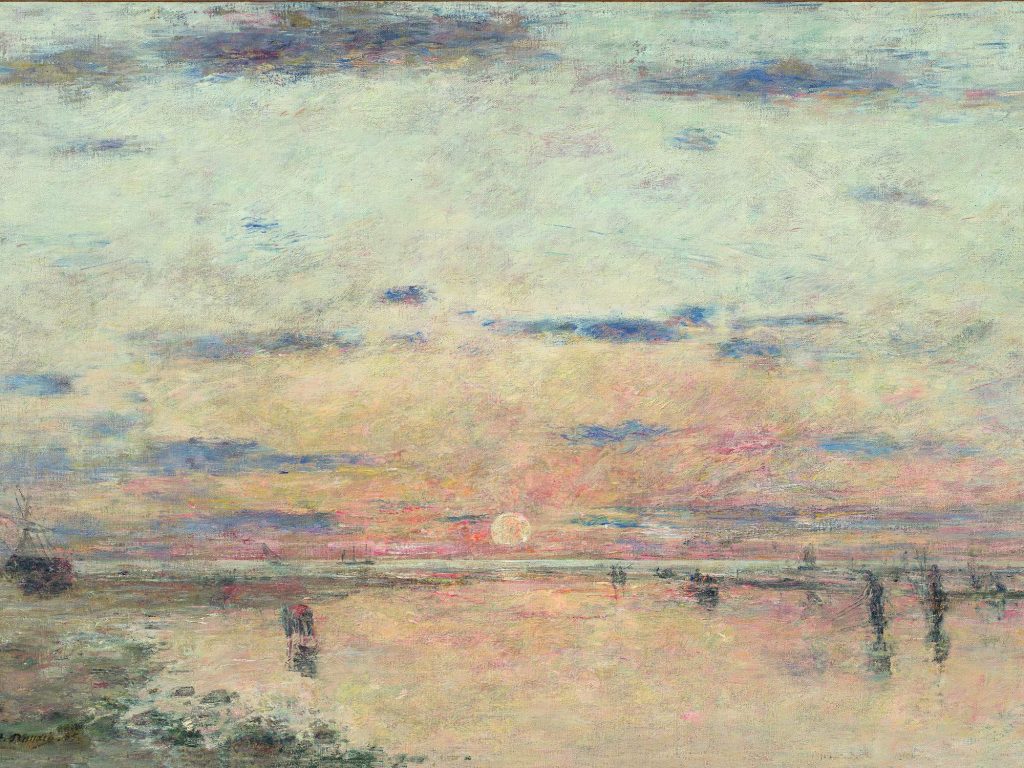
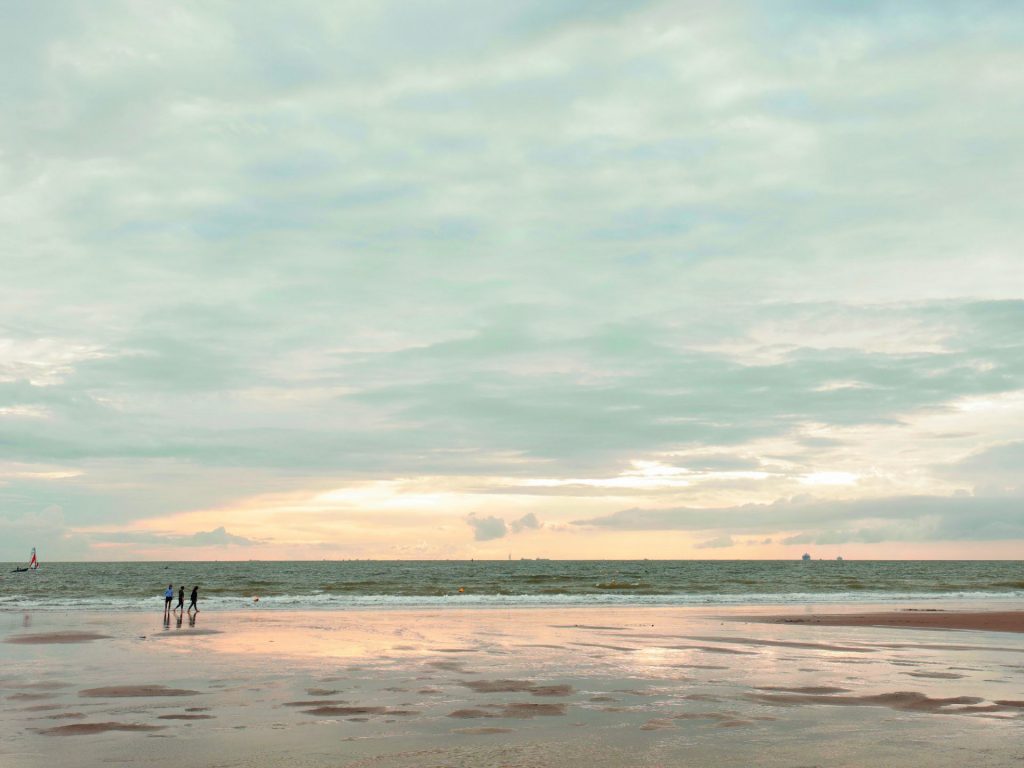
He was caught out by both weather and tide when reproducing Paul Signac’s Port en-Bessin, a small seaside village in Normandy. Signac was blessed with a bright sky and green waves tumbling on to the shore. Irrgang had to make the best of a sombre day and a low tide with not a wave in sight. Nonetheless, the village is identifiable from the fine day in 1883 when Signac put brush to canvas.
But in an era when global warming has changed the weather patterns so extremely, Monet’s winter scenes such as Floes at Bennecourt are hard to replicate. Monet painted this icy tableau 13 times and was often so cold that he wore heavy boots and shawls while he worked. The result is a chill, foggy world, which succeeds in being both luminous and ominous at the same time.
Irrgang captures the mood with water so limpid it “feels” cold. He was lucky with another wintry theme by Monet, Skaters at Giverny, timing his visit to the moment when the land had been flooded and frozen over. No skaters though; instead, the stubble of a plowed field that poked through the ice.
But many locations have completely changed. Alfred Sisley’s The Stone Quarries at Veneux in the Sun, Morning shows a man, perhaps a labourer, walking on the uneven track between the river and the quarries. Today the grass is mown, the quarries have been landscaped and a smart path heads in the direction of a bridge that was not in the original.
Berthe Morisot was influenced by JMW Turner after a visit to the National Gallery in 1875, and in The Thames she painted ships, bold red and black against the murky water and a cheerless sky. Today, Irrgang has managed to find similar ships floating at much the same angle off Butler’s Wharf, once important for its warehouses, but it’s hard to ignore the three tower blocks in the background.
An even greater transformation is evident from Monet’s The Port of Le Havre, Night Effect, which Irrgang, in his quest for authenticity, reckons was painted from his hotel room on the Grand Quai. The hotel has long gone, the bustling boats and amiable busyness of the harbour now replaced by the clutter of commerce, cranes, gantries and warehouses.
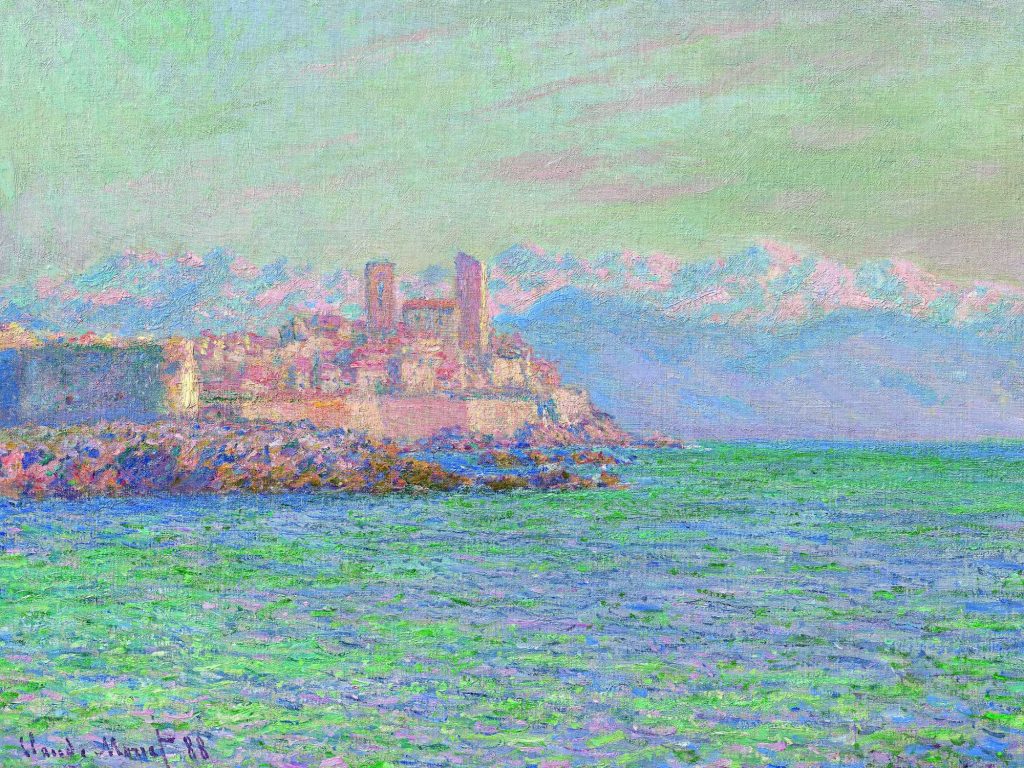
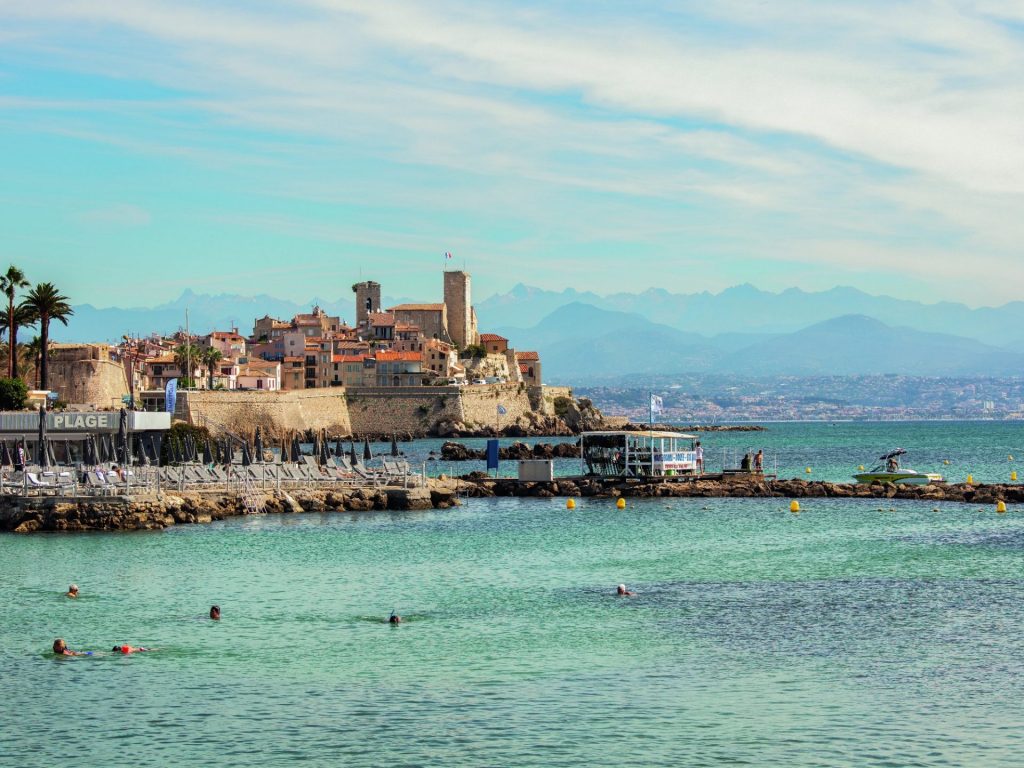
It was a critic, one Louis Leroy, who was so unimpressed by another version of the harbour by Monet – Impression, Sunrise, which was shown at the 1874 exhibition – that he labelled its startling orange sun, ghostly cranes and sullen waters as typical of “impressionism”. And he wasn’t being complimentary.
Monet’s Boats at Zaandam, a charming portrayal of sailing barges in the small port, has completely disappeared. Irrgang did his best; he found a spot on the deck of a nearby houseboat for his photograph, but today there are no boats, no water, just a pedestrianised shopping centre.
But where does this game of compare and contrast leave us? In the book, Irrgang says: “At the beginning, I thought of the job as more of a research project than a photographic one. Searching for and finding the precise locations was uppermost in my mind. So when I first drove to Giverny (Monet’s home for 43 years until his death in 1926) to photograph the water-lily pond I was not greatly enthusiastic.”
Understandable. How do you compete with a man who painted some 250 versions of the same subject? To make the challenge more difficult, it was impossible to decide where and when the paintings were made, especially as he painted many of his lilies in his studio. No help from the satnav here.
Irrgang, however, warmed to the idea. He worked “more creatively”, playing with focus and looking for a blurring effect. He reached for his trusty ladder and photographed what he saw before him. And the result? He captures the intense colours of the flowers, the reflection in the water of the willows above, and the “dense veil of blue and green smears of pigment”.
They could almost be by Monet. Almost.
Impressionist Places: Revealed in Paintings and Photographs (Prestel, £27.50)


